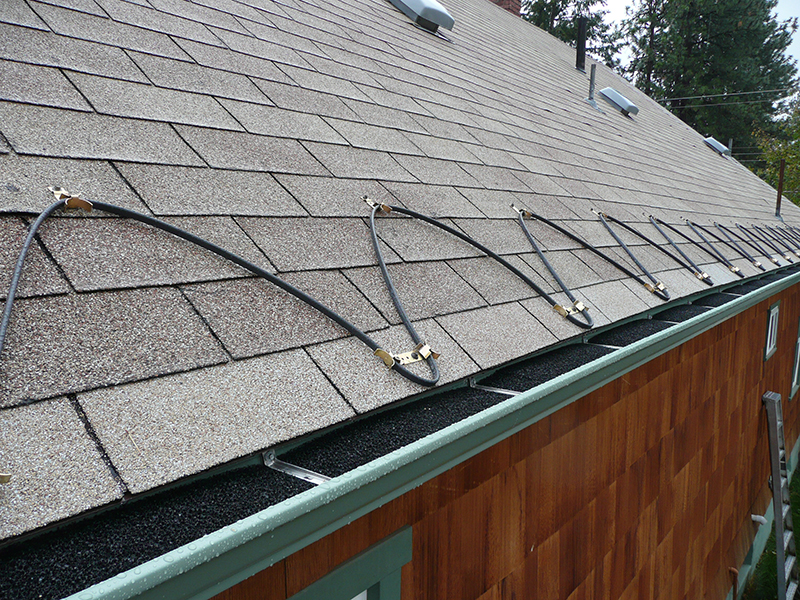Heating systems have played key roles in a number of commercial and residential settings for applications such as melting snow, ground heating, pipe maintenance, and frost protection, especially in colder countries since the industrial revolution. Recent years have witnessed significant increases in research & development processes, with IoT environments generating potential for value addition, especially for integration into architecture aimed towards smart city projects.
Modern Internet of Things setups leverage hyper-connected and intelligent technology use for electric heat tracing processes. Overall, this technology helps in heat loss management with the application of heating cables, aimed towards maintaining constant temperatures.
Heat tracing is an often unnoticed operational aspect of numerous industries to safeguard important assets from hazards of ice, snow, and water, for not only IoT, but IIoT setups as well. Consequently, heating cables are gaining traction in managing operations for oil and petrochemical pipelines. Heating cables are also gaining attention as a viable alternative to hot water pipes for underfloor home heating systems.
Types of Heating Cables
With the growing popularity of work from-home practices, household energy consumption rates have increased significantly. As per the International Energy Agency, work from home increased household power usage by 7 to 23%, with a notable percentage accounted for by heating applications.
Heating cables are largely used to nullify heat dissipation in pipes and equipment to prevent freezing and changes in viscosity of contents. These products can be largely classified into constant wattage and self-regulating cables. Constant wattage cables give out a preset wattage per linear foot regardless of ambient temperature. However, these operations generate a risk of overheating and burnouts.
On the other hand, self-regulating cables self-adjust energy output on the basis of ambient and surface temperatures, without the use of control devices. This characteristic is ideal for a wide range of IoT and IIoT sector applications.
Application in the Commercial Sector
As per a report by the European Commission, around 35% of the value of global IoT can be attributed to hardware, with cables accounting for a notable share. Smart heating cable systems find a wide scope of applications in commercial buildings including warehouses, hotels, hospitals, and malls.
With the rise of internet-enabled appliances, smart control systems offer exhaustive coverage for heating operations in terms of real time control and transparency, ideal for public infrastructure, retail and hospitality sector operations. Another option that finds significant potential for adoption includes proportional ambient sensing control for consistent temperatures in circuits, enabling up to 70% savings in energy consumption.
According to the U.S. Energy Information Administration, space heating accounts for more than 25% of commercial building energy needs. Commercial heating cable setups differ according to the size of the end user entity, ranging from a simple on/off control systems, which require specialized setups including practical, physical protection such as walls and ramps, in addition to self-regulating heating cables integrated with IoT-based controllers and building management software, which automatically adjust temperature for optimal energy consumption.
Industrial Sector Solutions
According to the International Energy Agency, industrial heating accounts for two-thirds of industrial energy demand, and a fifth of energy consumption on a global scale. With IIoT, involving smart system connectivity and remote monitoring capabilities, cabling for heat tracing finds roles in chemical production, and remote oil & gas facilities, among others. While conventional heat management systems required frequent onsite maintenance visits, the introduction of smart controllers, allow for self-checking, minimizing costs associated to personnel.
The use of IoT in heating cable setups enable accurate, real-time prognosis, ranging from individual pieces of equipment to that of an entire industrial facility. These novel innovations allow engineers to run simulations for potential real-world stoppages and consequent failures. This in turn helps in the generation of actionable insights associated with severe heating issues and related downtime.
Smart sensors allow users to easily monitor real-time data, to manage heat and power resources. Further, retrofitting of older buildings are likely to generate new opportunities for the foreseeable future. The combination of heating cables in Internet of Things architecture including cloud platforms, smart controllers, and TCP servers and data transfer units is likely to generate opportunities for the development of inexpensive, wireless heating control system solutions in years to come.
Author Bio: Shambhu Nath Jha, Senior Research Consultant
Shambhu Nath Jha with an experience close to a decade, has helped over 50 large and medium to small business enterprise to foray into new markets, increase footprint in the existing bucket and understand the nature of the beast. These beasts are the companies that have been primarily engaged in ICT ecosystems, and encountering challenge either in maintain P&L or staying ahead of their competitors. He has authored over 300 industry research papers consisting critical information such as market growth, total addressable market, serviceable addressable market, market size, forecast, player strategies, market share estimates and winning imperatives along with recommendations. These insights are based on a report on Heating Cables Market by Fact.MR.


